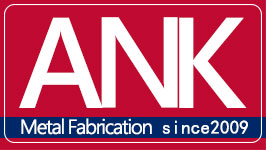Precision tube bending is a manufacturing process that involves bending tubes or pipes to specific angles and shapes with high accuracy and consistency. This process is widely used in industries such as aerospace, automotive, and medical, where precision and quality are critical.
The Process of Precision Tube Bending
The process of precision tube bending involves several steps, starting with the selection of the appropriate tube material and size based on the application requirements. The tube is then prepared by cleaning and deburring the ends to ensure a smooth surface for bending. The tube is placed in a precision tube bending machine, which uses mandrels, wiper dies, and pressure dies to control the bending process. The machine applies force to the tube at specific points, which causes it to bend to the desired angle and shape. After the bending process is complete, the bent tube is inspected for accuracy and quality. Finally, the bent tube may be finished with additional processes such as polishing, painting, or coating, depending on the application requirements.

Advantages of Precision Tube Bending
There are several advantages of precision tube bending. Firstly, precision tube bending allows for highly accurate and consistent bends, ensuring that the finished product meets the required specifications. Secondly, the bending process can actually increase the strength of the tube, making it more durable and able to withstand high-pressure applications. Thirdly, precision tube bending can be used to create a wide range of shapes and angles, making it suitable for many different applications. Fourthly, precision tube bending can be a cost-effective alternative to other manufacturing methods, such as welding or casting. Fifthly, precision tube bending can minimize waste by using only the necessary amount of material to create the required shape, reducing scrap and saving costs. Finally, bent tubes can have a more aesthetically pleasing appearance than straight tubes, making them ideal for applications where appearance is important, such as architectural or decorative applications.
Applications of Precision Tube Bending
Precision tube bending has many applications in various industries. In the aerospace industry, precision tube bending is used to create structural components, fluid and gas handling systems, and exhaust systems. In the automotive industry, precision tube bending is used to create exhaust systems, brake lines, and fuel lines. In the medical industry, precision tube bending is used to create medical devices such as catheters and endoscopes. In the architectural industry, precision tube bending is used to create decorative elements such as handrails and balustrades. In the electronics industry, precision tube bending is used to create components such as heat exchangers and cooling systems.
In conclusion, precision tube bending is a highly accurate and consistent manufacturing process that offers many advantages, including increased strength, versatility, cost-effectiveness, reduced waste, and improved aesthetics. This process has many applications in various industries, including aerospace, automotive, medical, architectural, and electronics. If you require precision tube bending services, it is important to choose a reputable and experienced manufacturer who can provide high-quality products that meet your specific requirements.


